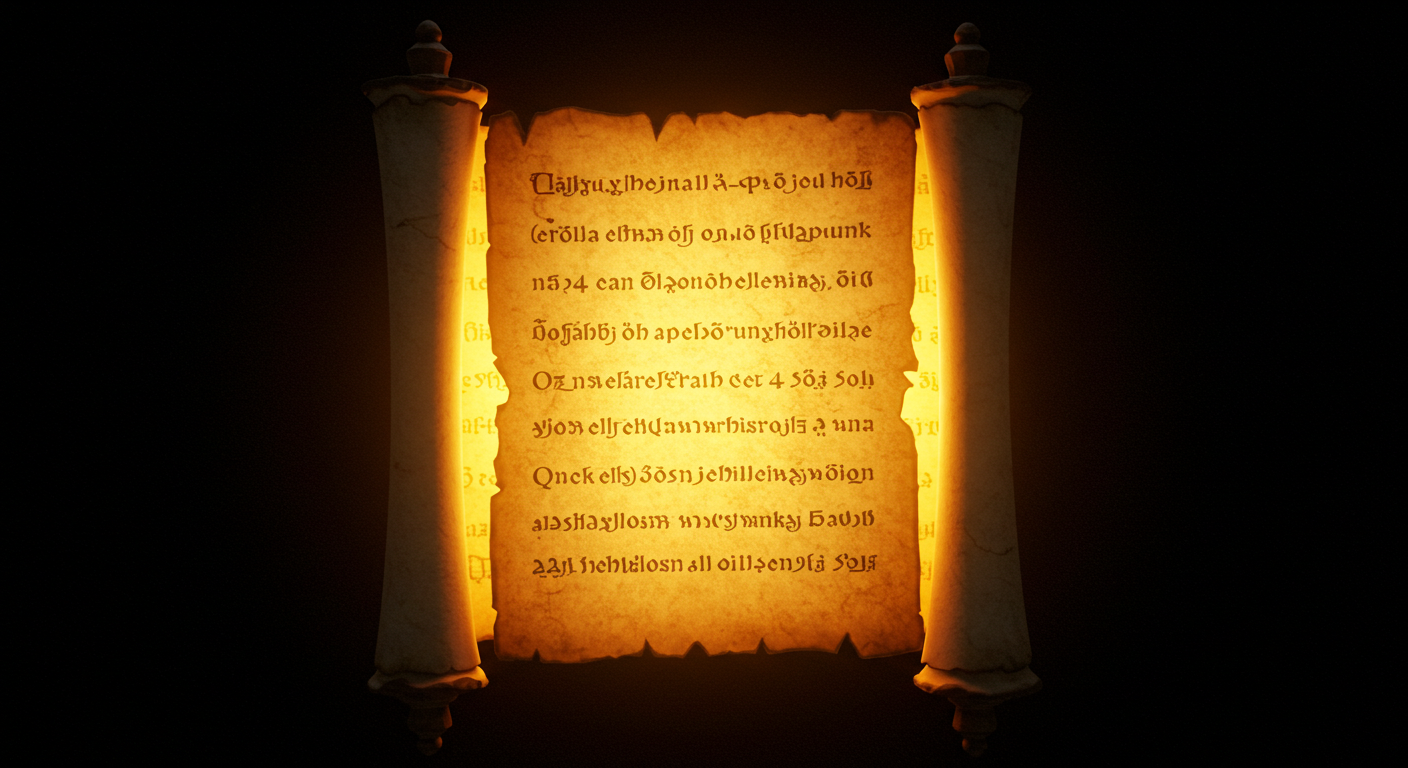Uncover the meaning behind Revelation 17:3’s Scarlet Beast. Dive into the symbolism and insights of this apocalyptic text, bridging ancient visions with modern relevance.
The Scarlet Beast: Unmasking the Symbolism in Revelation 17:3
The book of Revelation has long intrigued and puzzled readers with its vivid and often bewildering imagery. One of the most enigmatic figures in this apocalyptic text is the Scarlet Beast, a symbol shrouded in mystery and significance. In this friendly guide, we will delve deep into the world of prophetic visions, specifically focusing on Revelation 17:3. By understanding the context, symbolism, and interpretations of this vision, you’ll gain new insights into its meaning and relevance, both historically and for contemporary readers.
Introduction to Prophetic Visions
Definition of Prophetic Visions
Prophetic visions in the Bible are not mere dreams but divinely inspired revelations that convey profound spiritual truths. These visions served as a direct communication channel between God and the prophets, unveiling mysteries, future events, or divine wills in symbolic or literal forms. Prophetic visions carry immense significance, often pointing toward God’s overarching plans and purposes.
Purpose of Prophetic Visions
God used prophetic visions as a means to communicate with His prophets, given their surreal, memorable nature that evoked awe and contemplation. They often came during times of crisis or transition, imparting hope, warnings, or guidance. By embedding His messages in vivid and complex symbols, God ensured that these visions would be deeply pondered and passed down through generations, preserving their divine messages.
Historical and Cultural Context
The prophetic visions in the Bible are deeply rooted in the historical and cultural settings of their time. The prophets often received these visions amidst significant political, social, or religious turmoil. Understanding the cultural context—such as the common symbolism used in Near Eastern traditions, historical events, and prevailing beliefs—enriches our comprehension of these visions. For instance, the vivid imagery of beasts in Daniel’s and John’s visions reflects the real fears and hopes of people living under oppressive empires.
Context of the Vision in Revelation 17:3
Scriptural Background
The vision of the Scarlet Beast recorded in Revelation 17:3 is part of John the Apostle’s apocalyptic revelation on the island of Patmos. This chapter falls within a larger narrative describing God’s judgment and the ultimate triumph over evil. Leading up to this verse, John is introduced to the Great Prostitute, a symbol of rampant idolatry and moral corruption. The passage serves as a dire commentary on the state of humanity entangled in sin and the impending divine reckoning.
Prophet’s Role and Mission
John the Apostle, the recipient of this vision, was exiled to Patmos under Roman persecution. His role was to relay these graphic and often terrifying visions to the early Christian communities, who were themselves enduring immense suffering. These visions provided both a stark warning and a profound hope, affirming God’s control and eventual justice. John’s mission was thus twofold: to admonish the faithless and to reassure the faithful of God’s ultimate sovereignty.

Vision’s Imagery and Symbolism
The imagery in Revelation 17:3 is striking and rich with symbolism. John sees a scarlet beast, full of blasphemous names, with seven heads and ten horns. This creature is not just an arbitrary monster but a loaded symbol representing various facets of evil and corruption. The scarlet color signifies opulence and sin, the seven heads denote political powers, and the ten horns symbolize strength and dominion. These elements collectively paint a picture of a powerful but morally bankrupt entity, both awe-inspiring and terrible.
Theological Significance
Theologically, the vision of the Scarlet Beast underscores themes of divine judgment and the ultimate demise of corrupt powers. The beast’s blasphemous nature highlights the rebellion against God, while its eventual destruction reiterates the assurance of God’s judgment and the restoration of righteousness. This vision serves as a crucial segment in the eschatological narrative, reminding believers of the transient nature of worldly power and the enduring victory of God’s kingdom.
Interpretation of the Vision’s Message
Immediate Message for the Original Audience
To the original audience of early Christians, grappling with persecution and societal marginalization, the vision of the Scarlet Beast was both a cautionary tale and a reassurance. It illustrated the pervasive and seductive power of evil, urging believers to remain vigilant and steadfast. At the same time, it reassured them that despite the dominance of corrupt powers, God’s judgment was imminent, and deliverance was on the horizon.
Prophetic Fulfillment
Historically, the scarlet beast has been interpreted as the Roman Empire, renowned for its opulence, moral decadence, and persecution of Christians. Over the centuries, various other interpretations have arisen, viewing the beast as a symbol of successive evil empires or institutions embodying similar corrupt characteristics. The fulfillment of this prophecy can be seen in the fall of such oppressive regimes and the ultimate triumph of faith, aligning with the broader message of hope and restoration in Biblical prophecy.
Relevance to Modern Readers
For modern readers, the vision of the Scarlet Beast holds enduring significance. It serves as a reminder of the perils of moral compromise and the deceptive allure of power and materialism. In contemporary times, where societal values can often deviate from spiritual truths, this vision calls for introspection and adherence to faith. It also reassures believers of God’s continuous presence and the certainty of divine justice, offering hope amidst present-day adversities.
Comparative Analysis
Comparison with Other Biblical Visions
The vision of the Scarlet Beast shares thematic connections with other Biblical visions, such as Daniel’s visions of the beasts and the symbolic imagery in Ezekiel. These visions collectively depict a struggle between divine purpose and worldly corruption, consistently reiterating God’s ultimate dominion. By comparing these visions, one can notice recurring motifs like beasts representing political powers and the usage of numbers like seven and ten, enriching our understanding of Biblical prophecy.
Historical and Eschatological Perspectives
Over the ages, different theological traditions have offered varying interpretations of the Scarlet Beast. Some view it through a preterist lens, seeing its fulfillment in past historical events, while others adopt a futurist perspective, anticipating an end-times application. Each perspective adds layers to the eschatological discussion, contributing to a nuanced understanding of Revelation. The recurring focus remains on the assurance of God’s sovereignty and the triumph of divine justice.
Conclusion
Summary of Key Insights
The vision of the Scarlet Beast in Revelation 17:3 is a compelling amalgamation of rich symbolism and profound messages. Its vivid imagery of power and corruption serves as both a warning against moral decay and an assurance of divine justice. By examining its context, historical interpretations, and theological significance, we gain deeper insights into its enduring relevance and the overarching narrative of God’s plan as revealed in the Bible.
Final Thoughts on Prophetic Visions
Prophetic visions like that of the Scarlet Beast are pivotal in understanding the spiritual and moral landscape depicted in the Bible. They not only provide a glimpse into divine mysteries but also guide believers in their faith journey, offering warnings, hope, and reassurance. Reflecting on these visions enriches our spiritual understanding, urging us to remain vigilant and steadfast in faith amidst worldly challenges.
Additional Resources
Further Reading
For those eager to delve deeper into the fascinating world of prophetic visions, consider exploring the following resources:
- “The Book of Revelation: A Commentary on the Greek Text” by G.K. Beale
- “Ezekiel: An Introduction and Commentary” by John B. Taylor
- “Daniel: An Introduction and Commentary” by Joyce G. Baldwin
Study Questions
To facilitate deeper reflection or group discussion, here are some questions to ponder:
- What do the symbols in the vision of the Scarlet Beast represent in today’s context?
- How do prophetic visions like those in Revelation influence your understanding of divine justice?
- In what ways can the messages in these visions be applied to modern societal issues?







